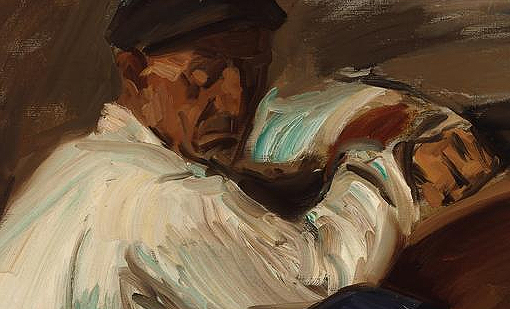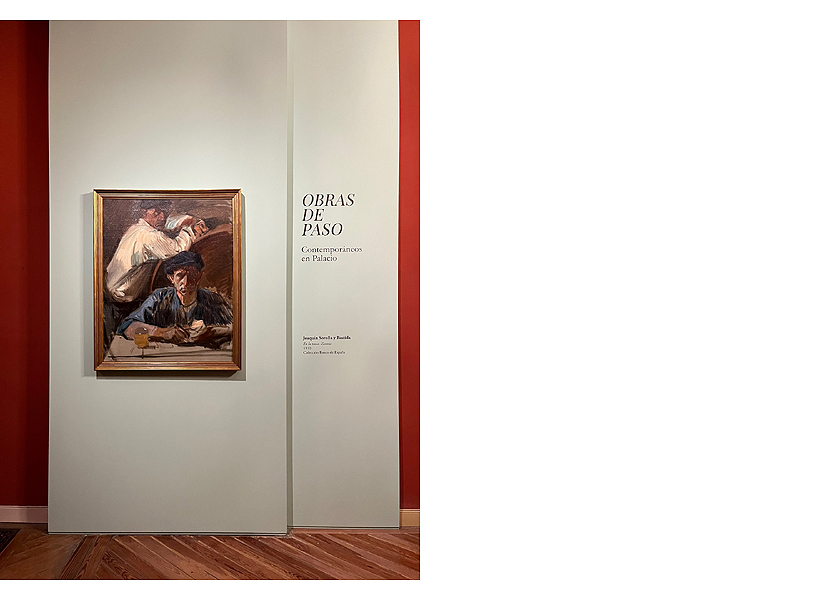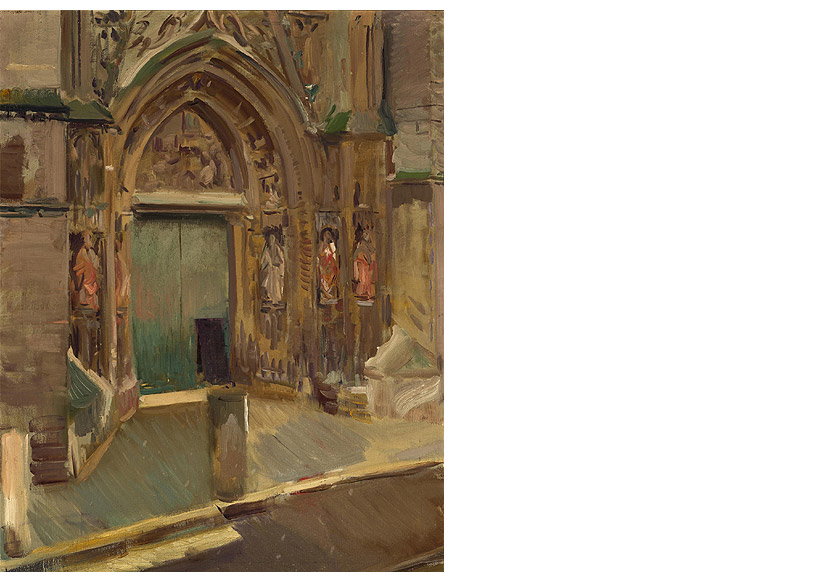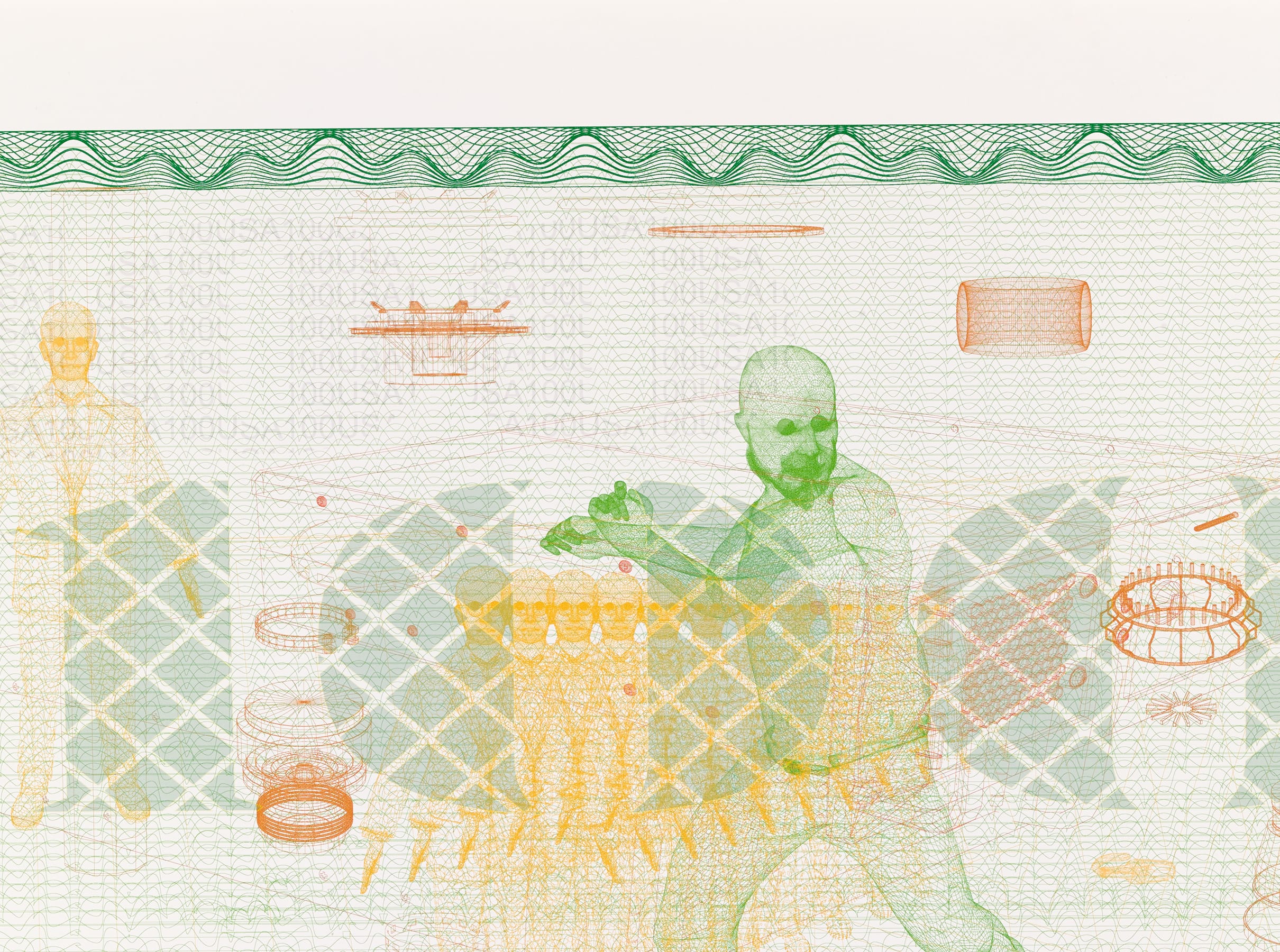
‘In a Tavern. Zarautz’ selected by Cerralbo Museum to open exhibition ‘Works in Passing’
To mark the centenary of the death of Joaquín Sorolla y Bastida (b. Valencia, 1863 – d. Cercedilla, Madrid, 1923), 2023 has been declared "Sorolla Year". The idea is to extend knowledge of his prolific output and highlight his significant role in late-19th and early-20th century Spanish art. As mentioned in an earlier news item, the Banco de España Collection includes several works by Sorolla, an artist who created an unmistakable style of his own in which the influence of the Golden Age of Spanish painting, with Velázquez as its prime exponent, coexists with the integration and exploration of key trends from the cutting edge of art in his time. We have four works from the first decade of the 20th century that cover some of the main genres and artistic paths explored by Sorolla in the course of his career: Voltaire Telling a Story (1905), Old Door of Seville Cathedral (1910), Portrait of José Echegaray (1905) and In a Tavern in Zarautz (1910).
This last work has been chosen by the Cerralbo Museum![]() to open its exhibition project Works in Passing. Contemporaries at the Palace
to open its exhibition project Works in Passing. Contemporaries at the Palace![]() , which features works by contemporaries of Enrique de Aguilera y Gamboa, 17th Marquess of Cerralbo
, which features works by contemporaries of Enrique de Aguilera y Gamboa, 17th Marquess of Cerralbo![]() held outside the valuable collection that he himself built up over the course of his lifetime. Each of the works chosen will spend three months at the Summer Reception Rooms at the palazzo in Madrid where the marquess lived. The palazzo stands at the corner of Calle Ferraz and Calle Ventura Rodríguez in the heart of Madrid, and was awarded Historic and Artistic Monument and Location of Cultural Interest status in 1962. The idea is for the works on loan to establish a dialigue with the collection held at the museum itself, which is made up mainly of works from the Spanish, Italian and Flemish schools painted between the 17th and 19th centuries. With this exhibition, curated by María Sanz Cubells, the Cerralbo Museum seeks to take a critical look at its own history, based on the idea that in order to understand that history, the works that might have been included in the collection are just as important as those that were.
held outside the valuable collection that he himself built up over the course of his lifetime. Each of the works chosen will spend three months at the Summer Reception Rooms at the palazzo in Madrid where the marquess lived. The palazzo stands at the corner of Calle Ferraz and Calle Ventura Rodríguez in the heart of Madrid, and was awarded Historic and Artistic Monument and Location of Cultural Interest status in 1962. The idea is for the works on loan to establish a dialigue with the collection held at the museum itself, which is made up mainly of works from the Spanish, Italian and Flemish schools painted between the 17th and 19th centuries. With this exhibition, curated by María Sanz Cubells, the Cerralbo Museum seeks to take a critical look at its own history, based on the idea that in order to understand that history, the works that might have been included in the collection are just as important as those that were.
 The canvas In A Tavern in Zarautz (Joaquín Sorolla, 1910) at the Cerralbo Museum, the centrepiece of the first part of the new exhibition project Works in passing. Contemporaries at the Palace
The canvas In A Tavern in Zarautz (Joaquín Sorolla, 1910) at the Cerralbo Museum, the centrepiece of the first part of the new exhibition project Works in passing. Contemporaries at the Palace
In a Tavern in Zarautz, which is on show at the Cerralbo Museum until 21 September 2023, is one of a number of canvases that Sorolla painted during the summers that he spent on the coast of Gipuzkoa. Mónica Rodríguez Subirana writes that he chose the area first because it gave him the chance to paint beach scenes with a light very different from that of his native Valencia and second because it enabled him to introduce his family into the high society circles of his time. During his time there, he painted not just summer scenes depicting members of high society but also several showing humbler characters going about their daily business. This was a recurring theme for the artist and can be seen in such major works as The Old Man with the Cigarette![]() (1899) and
(1899) and ![]() Peppers (1903), both of which share certain formal features with In a Tavern in Zarautz, with its simple, almost photographic front-on composition. The painting reflects Sorolla's interest in painting everyday, common folk in moments of leisure and rest, in intimate scenes that operate as portraits of the people themselves and of their customs.
Peppers (1903), both of which share certain formal features with In a Tavern in Zarautz, with its simple, almost photographic front-on composition. The painting reflects Sorolla's interest in painting everyday, common folk in moments of leisure and rest, in intimate scenes that operate as portraits of the people themselves and of their customs.
 Joaquín Sorolla y Bastida: Voltaire Telling a Story (1905)
Joaquín Sorolla y Bastida: Voltaire Telling a Story (1905)
The other three works by Sorolla in the Banco de España Collection are very different in their forms and themes. Voltaire Telling a Story is a unique example of his decorative painting. Although this was not a genre that he practised much, it was to bring him great international renown and prestige, especially through his Vision of Spain![]() project, painted under a commission from Archer Milton Huntington between 1912 and 1919 to decorate the library of the Hispanic Society of America in New York. Voltaire Telling One of his Stories dates from 1905, i.e. several years earlier. It was intended to decorate a ceiling at the home of civil engineer Calixto Sánchez, with whom Sorolla maintained a long-lasting friendship. Sánchez came to own at least 10 of his paintings. This painting can be thought of as belonging to the genre known as "dress-coat paintings"
project, painted under a commission from Archer Milton Huntington between 1912 and 1919 to decorate the library of the Hispanic Society of America in New York. Voltaire Telling One of his Stories dates from 1905, i.e. several years earlier. It was intended to decorate a ceiling at the home of civil engineer Calixto Sánchez, with whom Sorolla maintained a long-lasting friendship. Sánchez came to own at least 10 of his paintings. This painting can be thought of as belonging to the genre known as "dress-coat paintings"![]() , which was very popular at the time. Rodríguez Subirana writes that it depicts Voltaire telling the story Plato's Dream, because a phantasmagorical shape in the clouds in the sky shows the figure of a naked man with his head in his hands, as if thinking or sleeping. This interpretation is supported by the fact that Sorolla had a copy of the book by Voltaire in which that story appears in his personal library.
, which was very popular at the time. Rodríguez Subirana writes that it depicts Voltaire telling the story Plato's Dream, because a phantasmagorical shape in the clouds in the sky shows the figure of a naked man with his head in his hands, as if thinking or sleeping. This interpretation is supported by the fact that Sorolla had a copy of the book by Voltaire in which that story appears in his personal library.
 Joaquín Sorolla y Bastida: The Old Door of Seville Cathedral (1910)
Joaquín Sorolla y Bastida: The Old Door of Seville Cathedral (1910)
Old Door of Seville Cathedral was painted early in 1910. It was included in the monographic exhibitions arranged by Archer Milton Huntington the following year at the Art Institute of Chicago and the City Art Museum of St Louis. It is very similar to his series of views of Burgos Cathedral, painted in March and April 1910. Indeed, until recently it was catalogued as 'Door of Burgos Cathedral', though recent research seems to confirm that its flowing, direct brush-strokes and echoes of impressionism actually depict the Door of the Nativity —also known as the Door of St Michael— in Seville Cathedral, so-called because the tympanum above it contains a sculpture alluding to the birth of Jesus. Sorolla painted it when he travelled to Seville to paint a portrait of King Alfonso XIII. On the same trip, he toured other cities in Andalusia including Granada, Malaga and Cordoba and, in the words of Rodríguez Subirana, painted some of his most beautiful pictures of gardens.
 Portrait of José Echegaray (Joaquín Sorolla, 1905) at the exhibition Sorolla in Black (Sorolla Museum)
Portrait of José Echegaray (Joaquín Sorolla, 1905) at the exhibition Sorolla in Black (Sorolla Museum)
The final picture by Sorolla in the collection is Portrait of José Echegaray, a fine example of his portrait work. He began to paint portraits only in the last 20 years of his career, but in that time he produced many. This portrait was commissioned by Madrid Casino when playwright Echegaray was awarded the Nobel Prize for Literature in December 1904. In it he sought to highlight the sitter's status as a man of letters —he was also renowned as an engineer and a politician— as evidenced by the books that can be seen in the top hat on the left. This painting formed part of the exhibition Sorolla in Black![]() staged at the Sorolla Museum
staged at the Sorolla Museum![]() in Madrid from 12 July to 27 November 2022, which focused on the importance of the colour black —'its meanings, values and associated states of mind'— in Sorolla's works, inviting further critical readings of his legacy. Such readings could help plumb his complexity and multi-faceted nature as an artist, going beyond his conventional clichéd image as "the painter of light and colour".
in Madrid from 12 July to 27 November 2022, which focused on the importance of the colour black —'its meanings, values and associated states of mind'— in Sorolla's works, inviting further critical readings of his legacy. Such readings could help plumb his complexity and multi-faceted nature as an artist, going beyond his conventional clichéd image as "the painter of light and colour".
